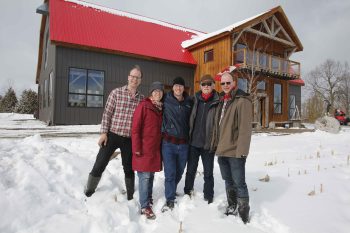Safety first! It’s a common refrain in research labs around the world, yet accidents stubbornly continue to happen – sometimes with deadly consequences. That’s why fourth-year engineering student Larissa Rodo (ChemE 1T3 + PEY) designed a new tool that helps academic researchers overcome the human tendency to underestimate risk.
With a focus on fostering safety-conscious work cultures, Rodo’s tool recently won her second prize in the 2014 Minerva Canada James Ham Safe Design Engineering Student Awards contest – an award named after James Ham, a former electrical engineering chair, U of T Engineering dean and U of T president.
Rodo’s project started by examining over 85 accidents in North American university labs, where she found that many bad decisions (that in hindsight look like preventable mistakes) don’t seem all that risky at the time.
“Why would you think that’s a good idea? What are the chances of that going wrong? These are questions that came up again and again as I was reading the accident reports,” said Rodo.
The psychology of lab safety culture in any work environment is a tricky business. Human beings are notoriously bad at judging how risky an action is. It requires diligent oversight to prevent the mantra of “it won’t happen to me” from ruling the day.
“Everyone knows there’s a risk but not necessarily the magnitude. For me, it’s getting beyond the paperwork and getting people to care,” said Rodo.
To help strengthen safety leadership in universities and colleges, she adapted the high standards of safety culture that exist in industry to academic settings. She developed a set of self-assessment tools, similar to a checklist, with a series of guided questions that are tracked.
These exercises in self-assessment build awareness for laboratory safety culture from a managerial standpoint, and they use historical accounts of accidents to reinforce the need for safety culture in universities. They also help administrators monitor safety in their labs and establish benchmarks and goals for training, reporting and communicating.
Rodo first brought her idea to chemical engineering Associate Chair Graeme Norval (ChemE), who encouraged her to pursue her research through an independent studies credit.
“While safety, in general, is managed well in many departments, there were previously no tools that department chairs could use to measure the safety performance of their own departments,” said Norval.
The 2014 Minerva Canada James Ham Safe Design Engineering Student Awards challenge engineering undergraduates from universities and colleges across Canada to make an original contribution toward integrating safety into engineering design.
The $1,500 prize was presented at the WSPS Partners in Prevention Health and Safety Conference on April 30 in Mississauga, Ontario, Canada.



